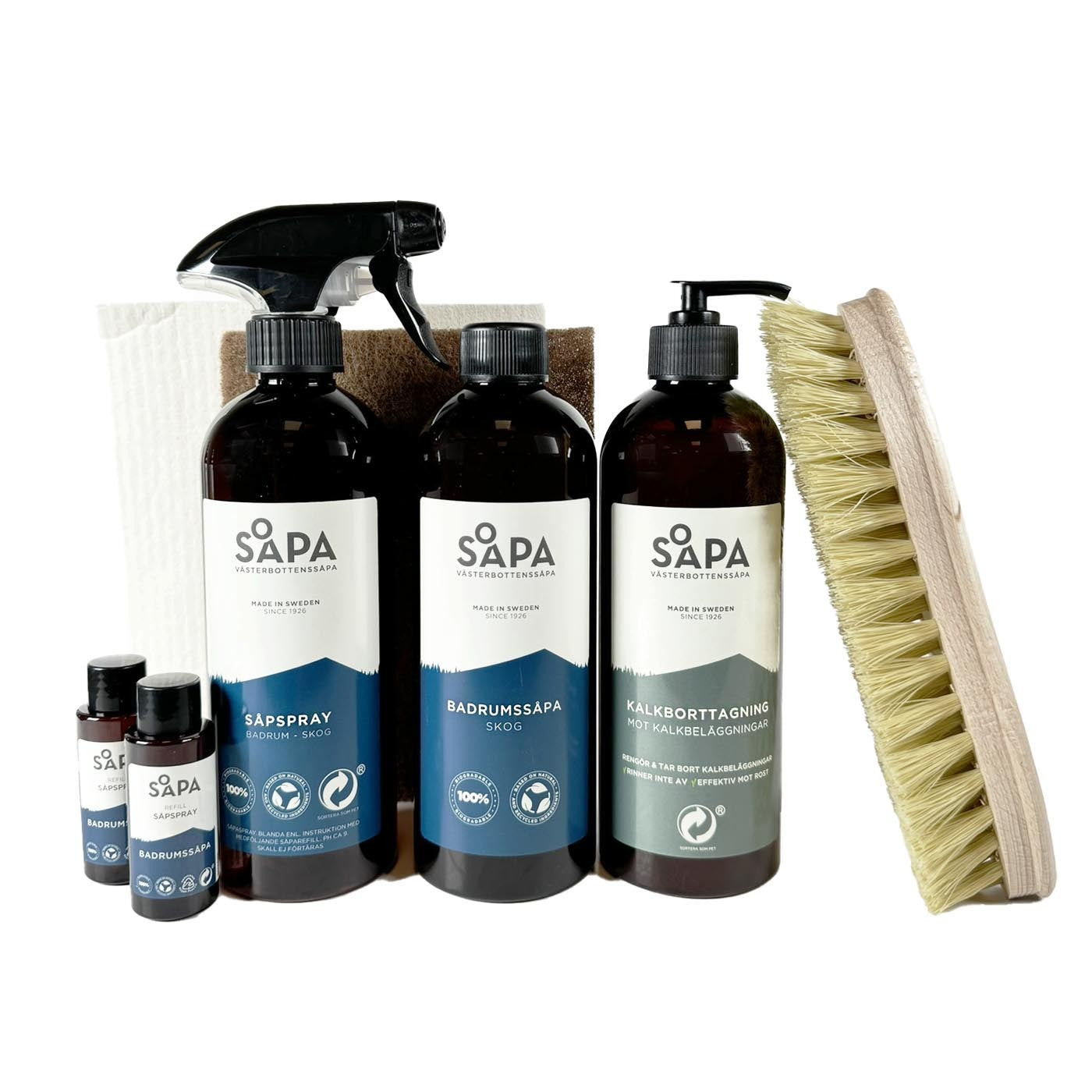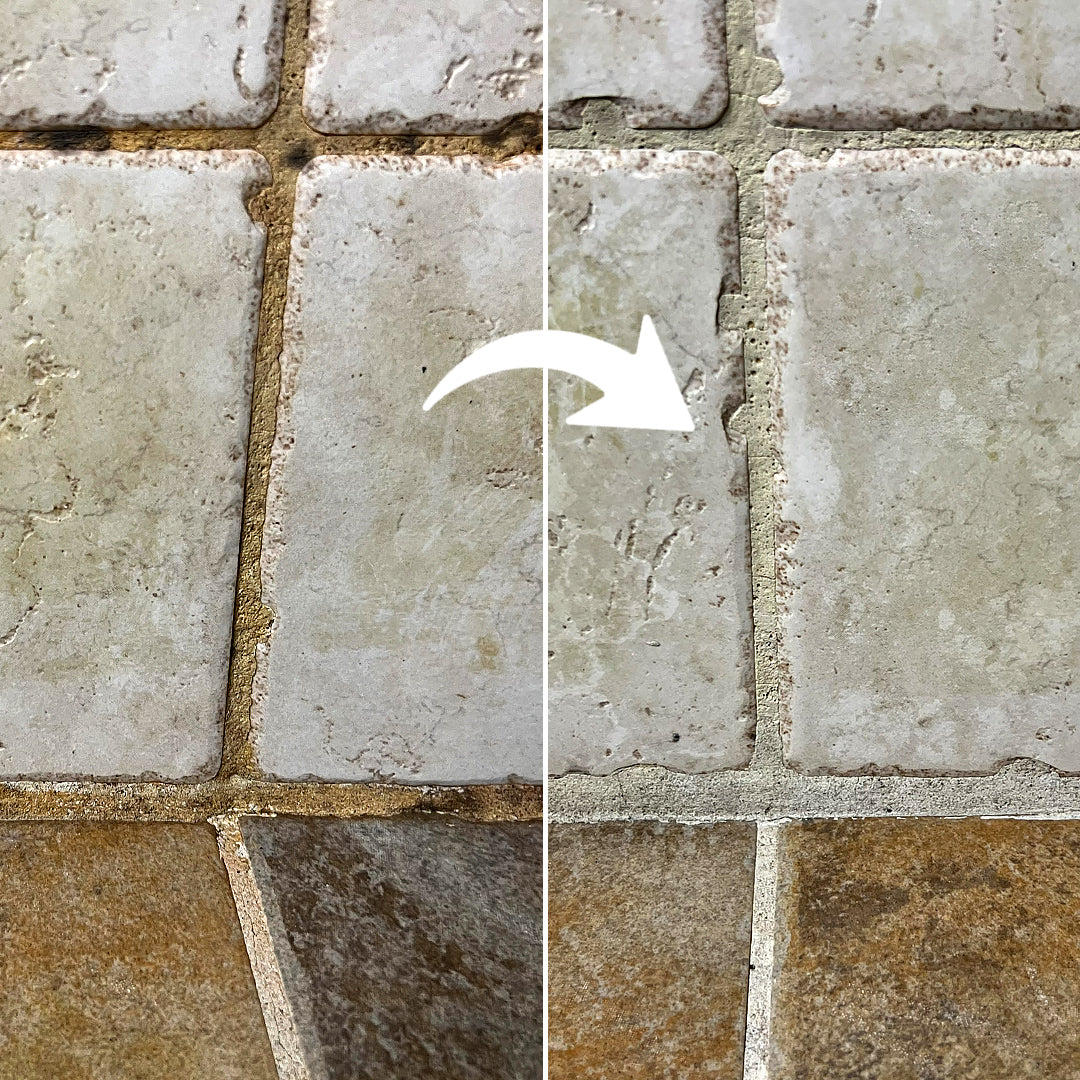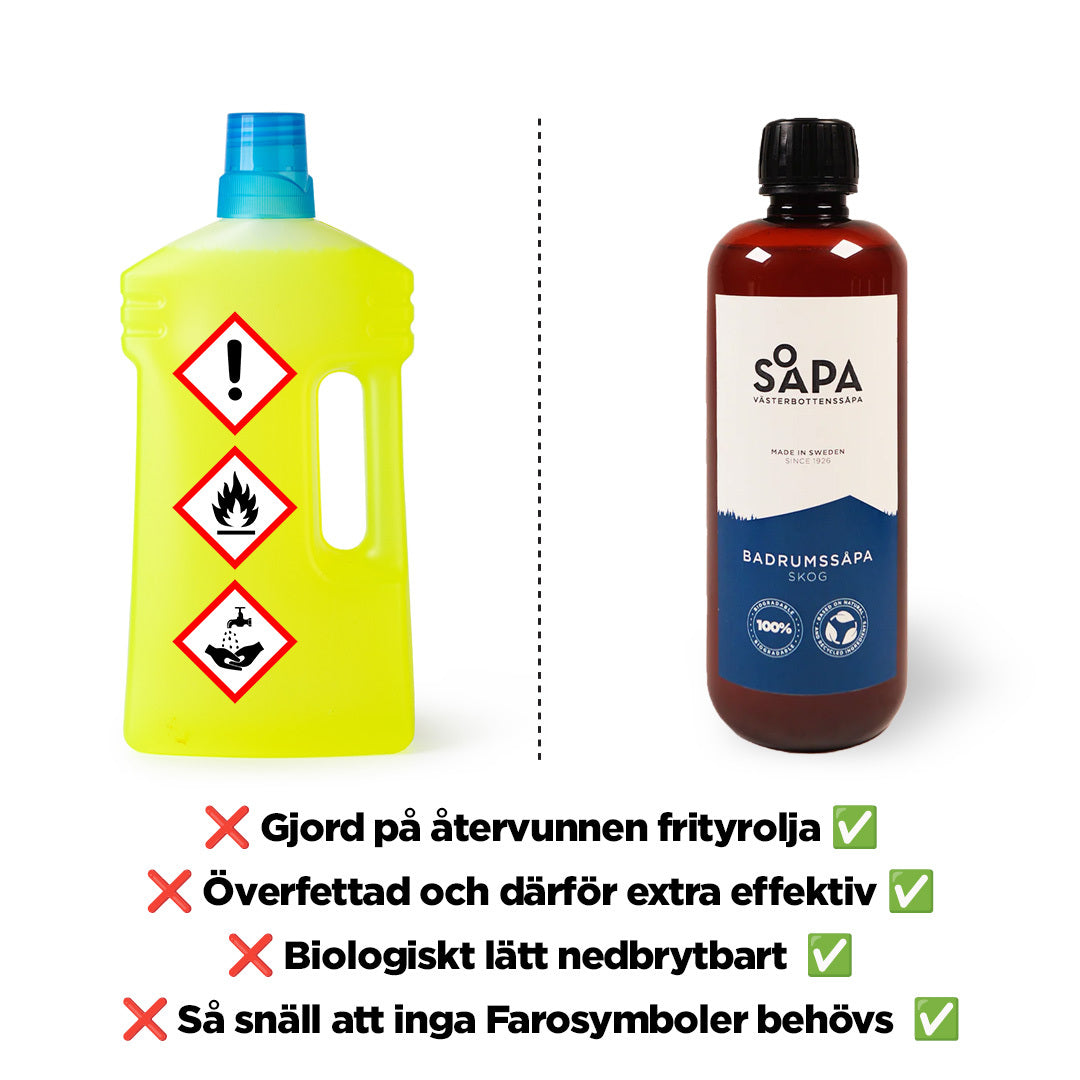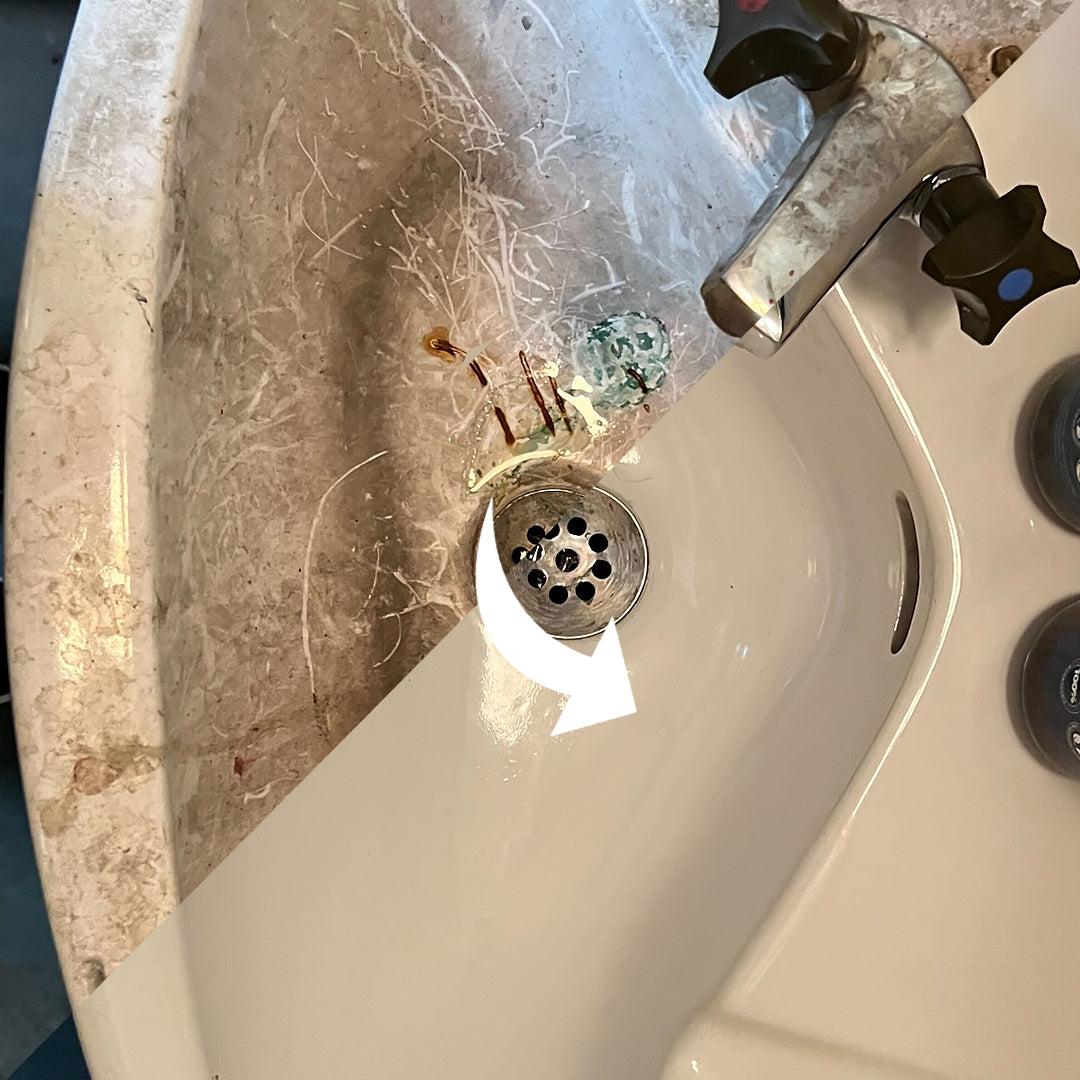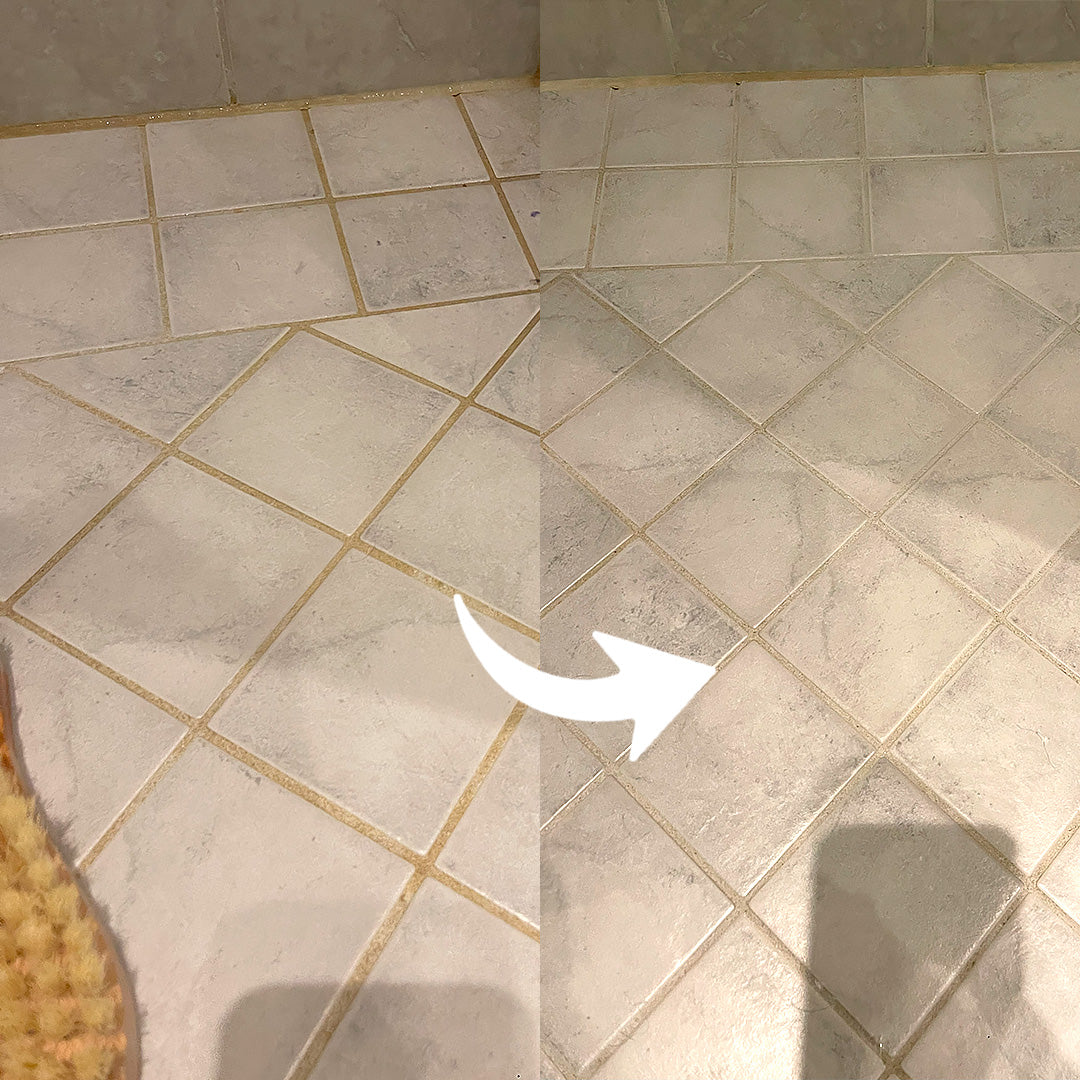Clean & Limescale-Free Bathroom
Clean & Limescale-Free Bathroom
Failed to load download availability
- About the Product
- Use
- information
A clean and limescale-free bathroom is of course wonderful, but it is not always easy to achieve. But with the right things and a few tips and tricks, it goes like a dance and no strong chemicals or brutal methods are needed. It works well with soap and a brush and a little vinegar.
Use bathroom soap to clean the sink, WC, shower, bathtub and joints with a scrub brush and cloth for tougher stains. To clean bathroom furniture, drawers, china and walls, use our soap spray. Vinegar is acidic and removes limescale stains. All soaps with blue labels have a fresh forest scent.
This kit includes:
- A reusable bottle for Soap Spray, 0.5 L
- Two highly concentrated refills for Soap spray with the scent of forest
- All-purpose cleaning soap, bottle 0.5L
- Route, biologically degradable
- Soft scrubbing brush, made in Sweden
- Eco fiber cloth
- Vinegar
Rekommenderade användningsområden med såpan:
- Såpan är användbar för städning av badrum såsom badrumsporslin, WC, duschutrymme, golvbrunnar, badkar.
Rengör med kalkborttagning:
-
Applicera gelén på ytan som är angripen av kalk. Använd en skursvamp eller en trasa för appliceringen.
-
Om ytan har mycket kalk, låt gelén verka i 15–20 minuter och skrubba sedan rent med en ekofiberduk, borste eller skursvamp. För lättare kalkbeläggningar eller mindre fläckar kan gelén appliceras och skrubbas bort direkt.
- Skrubba försiktigt med en svamp eller ekofiberduk för att avlägsna kalken som gelén har löst upp. Skölj av och torka ytan noggrant.
Gelén har ett lågt pH-värde och bör inte användas på marmor eller andra kalkrika stenmaterial.
Specifikation:
- Refill-flaskorna är gjorda av POP, Prevented Ocean Plastic, återvunnen plast som plockats upp från stränder runt om i världen. Produktionen av återvunnen plast ger 5x mindre koldioxidutsläpp än vanlig plast, dessutom minskar POP-programmet mängden plast i våra hav.
- Vår såpa innehåller endast vatten, såpa (förtvålad rapsolja) 15-30% och eventuell parfym.
Läs mer om innehåll här
Säkerhetstips:
-
Lämna inte osköljd såpa på golvet eftersom det kan orsaka halka.
-
Inte för konsumtion! Förvara åtskilt från mat.
-
Förvaras i rumstemperatur.
-
Håll utom räckhåll för barn.
-
Använd inte till ytor målade med linoljefärg.
-
Torka inte trasorna i torktumlare.
-
Förvaras utom räckhåll för barn och värmekällor.
Vid osäkerhet kring användning av produkten kontakta oss på info@vasterbottenssapa.se. För incilista se vardera produkts huvudsida.
What makes Västerbottens soap different from "regular" soaps that you buy in the grocery store?
Västerbotten soap has similar properties to a linseed oil soap, which is thus an overfatted soap. Other soaps that you buy in e.g. the grocery store is not overfat and therefore not as efficient. Soaps and soaps have varying amounts of excess oils and fats, that is, the part of fat that remains after saponification. Västerbottens soap has a larger surplus and is therefore extra caring and re-greasing.
Lyssna när Sara berättar mer i videon nedan
Tips on how to use the products in the kit
All soaps with blue labels have a fresh forest scent
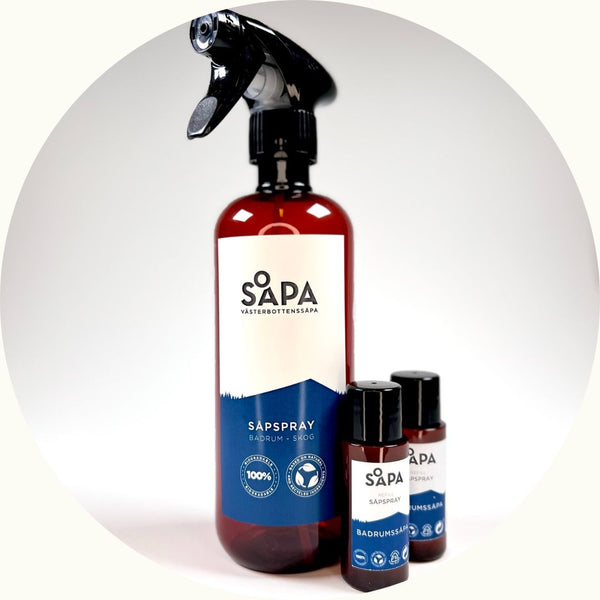
Fill the refill in the spray bottle and top up with water. Spray counter surfaces, sinks and bathroom china. Wipe off with the included cloth.
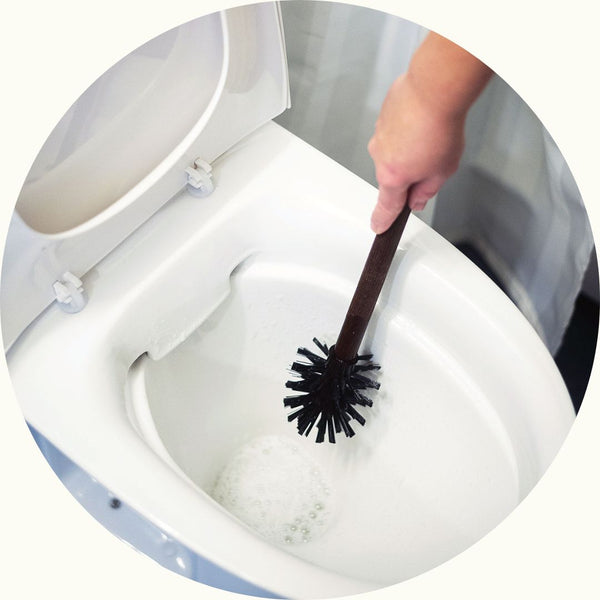
Use the concentrated soap in the bottle as a toilet cleaner, put the soap in the toilet bowl, scrub with the toilet brush and let it work for a while. Scrub a little more and flush and the toilet is clean. For heavily soiled toilets, let the soap work overnight.
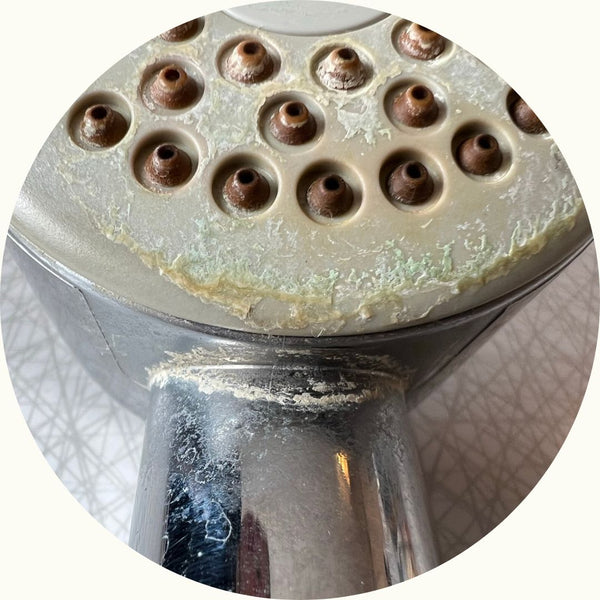
You use the vinegar to remove limescale residues. Start by making sure you've cleaned off everything that isn't limescale with soap and a brush. Then apply vinegar directly to a damp cloth or eco-fibre cloth and polish. If the limescale has settled and become a bigger concern, you may need to repeat the treatment with the vinegar and use the eco-fibre cloth to scrub off the limescale residues.
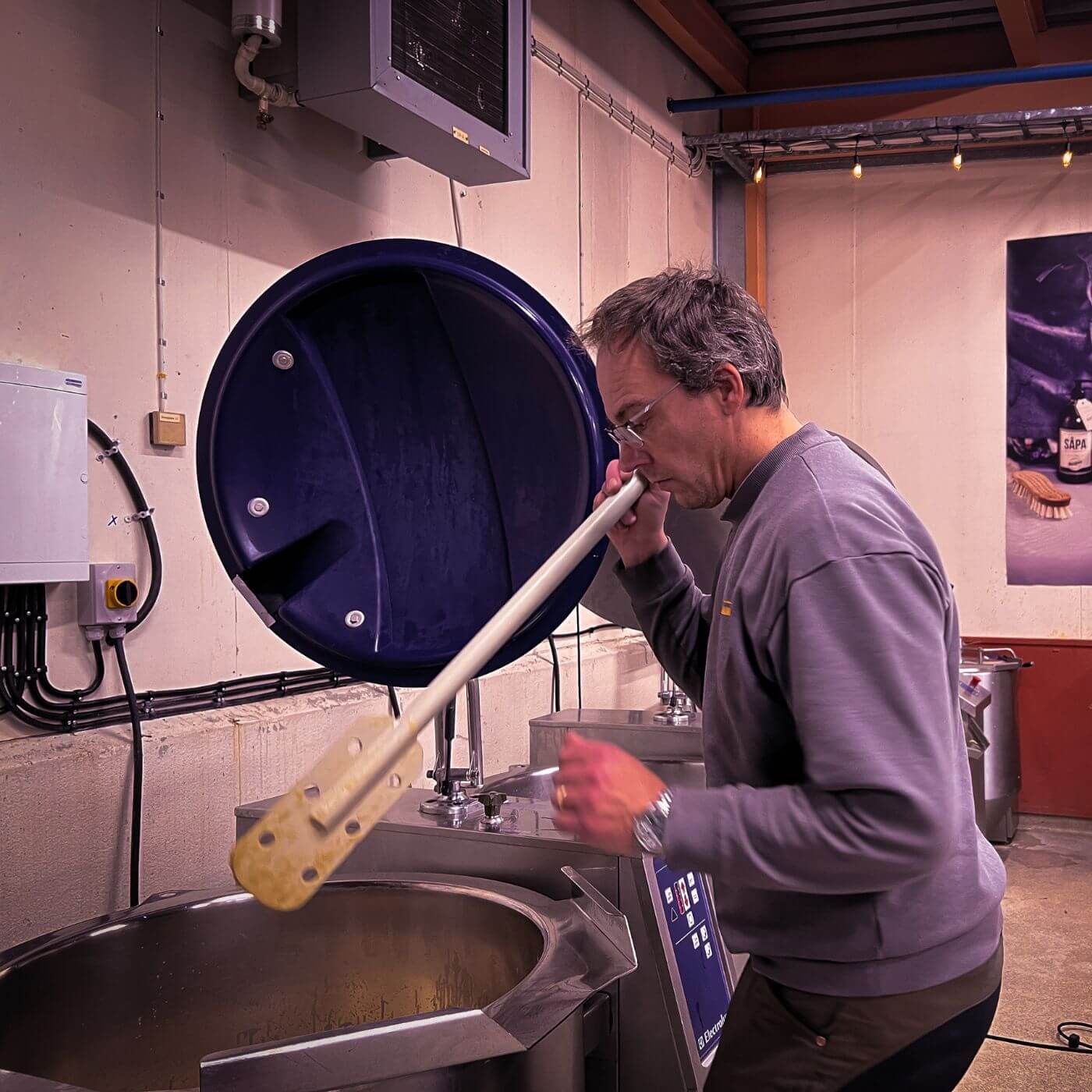
A story of 100 years of sustainable soap making
It has always been important to us to make real soap, not add unnecessary chemicals but only deliver PURE soap.
The history of Västerbottenssåpa began in the 1920s, when great-grandmother Fredrika made her own fine soap at home on the farm in Hornsjö, Vilhelmina.
Three generations later, Fredrika's legacy of living sustainably, sparingly and reusing lives on in the family. However, in a modern version, adapted to the times we live in today.
Our soap based on Fredrika's recipe has been given a package, a label and a name - Västerbottenssoap.
Instead of sheep fat that Fredrika used, Västerbottensåpa is now made from used cooking oil collected from selected local restaurants. It's mostly rapeseed oil or corn/rapeseed mix - but NEVER palm oil or animal fat.
The oil that is purified and saponified then forms the basis of all our soap-based cleaning products.
Let us tell you how it all comes together
Because the soap is made from recycled raw materials, i.e. is circular, the CO2 emissions for the product are very low. A bottle of soap including production, packaging and transport has a CO2 emission of approx. 237 g. This can be compared to the emissions for producing 1 kg of palm oil, which is approx. 10 kg.
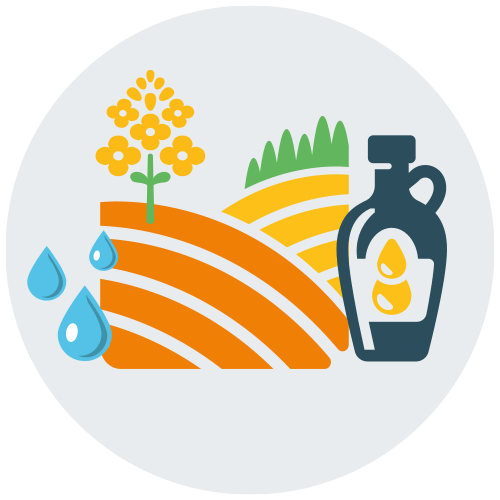
Rapeseed oil is produced as food.
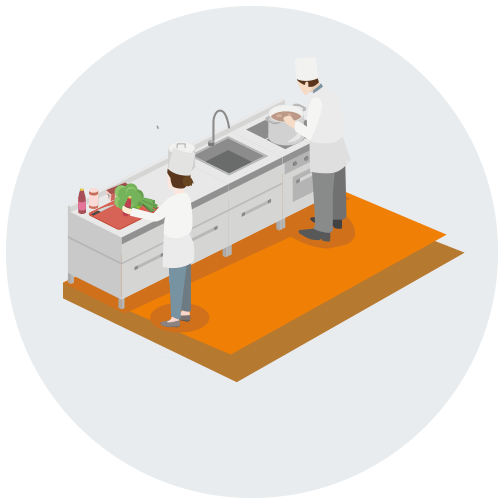
Rapeseed oil is used in restaurants around the country
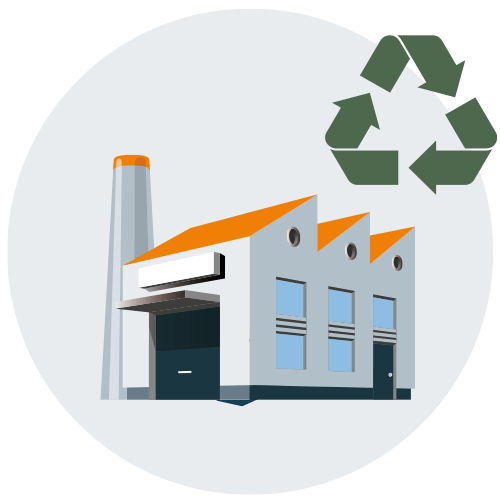
Västerbottenssåpa sources the oil that is purified in the small factory in Vilhelmina. It is then saponified into soap
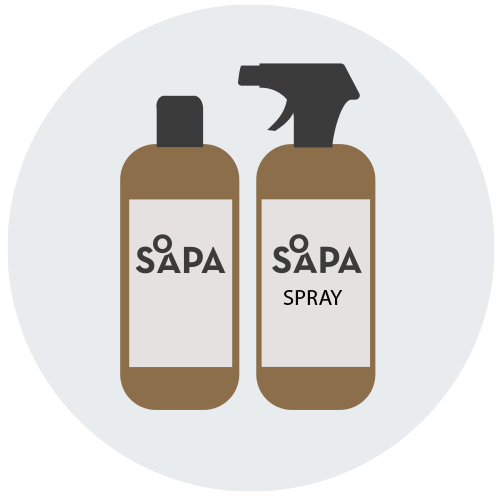
The soap is sent to you by mail.
Contains only three ingredients
Our soap contains only water, soap (saponified rapeseed oil) 15-30% and any perfume
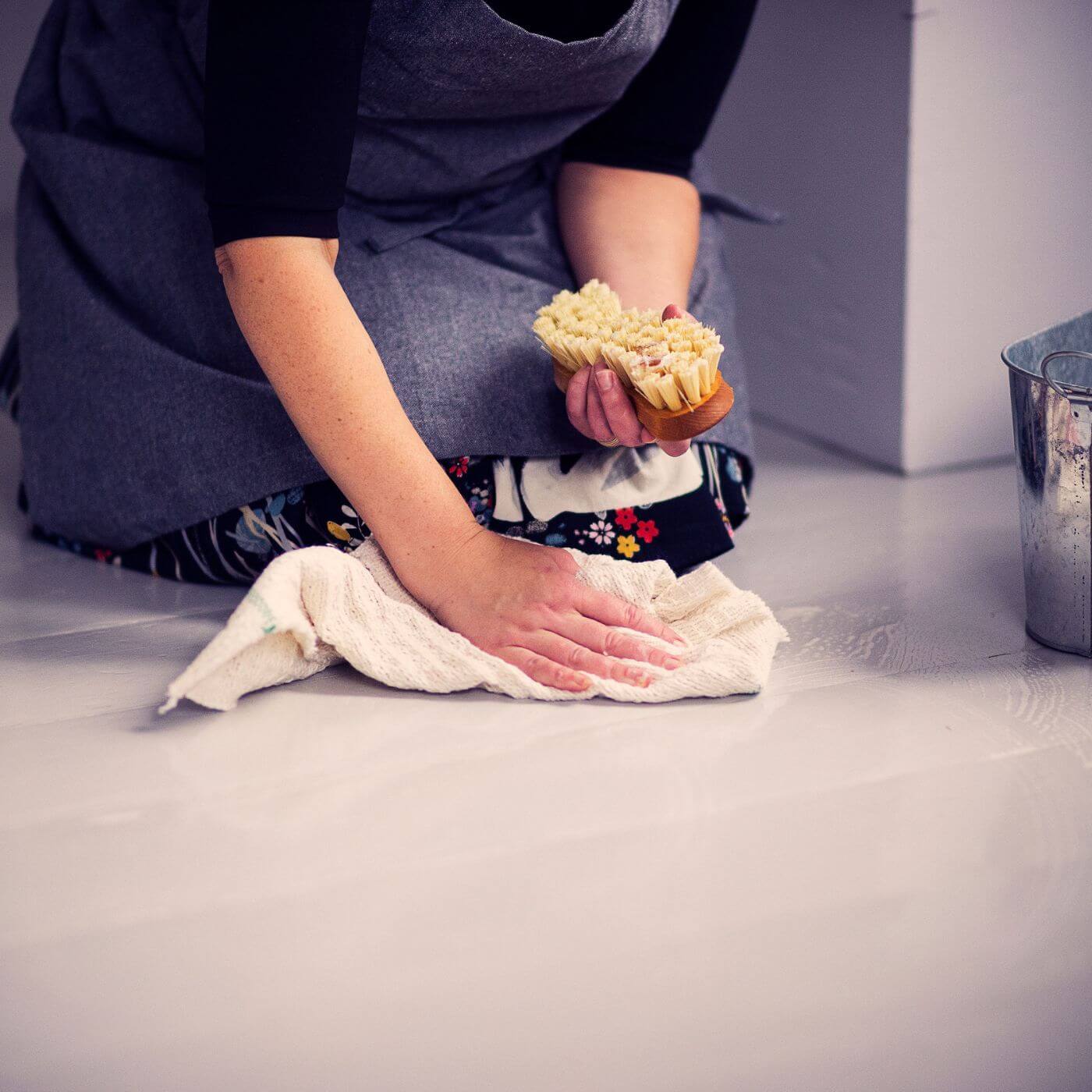
Our Cleaning Tools
With us you will find a large selection of cleaning tools made from natural and recycled materials.
Everything from scrub brushes (oven, panel, stove and other brushes in different sizes, materials and shapes), to glass hob scrapers, different types of cleaning sponges and dish cloths.
Common questions
How do I mix Soap Spray?
Empty the entire contents of the refill into the spray bottle. Then fill the rest with water (approx. 0.5 litres).
What is the difference between soap spray for bathrooms, kitchens and general cleaning?
The bathroom soap has a scent of Västerbotten firs, the all-cleaning soap has a woody scent and the soap spray for the kitchen is unscented.
Why do you have 3 different soap sprays?
For several reasons, for example, you should not cover up bad smells in the kitchen with perfumes. Therefore, the kitchen soap is completely unscented. Perfumes do not belong on surfaces where we prepare or handle food. However, many people want a perfumed product for the bathroom, e.g.
To avoid the spread of microbes through cross-contamination, you should have separate cleaning tools for the bathroom and kitchen. By separating the bottles, having three different ones, that risk is minimized.
Do I need to wet dry surfaces after cleaning them with soapy spray?
No, it is usually not necessary, but as with all cleaning agents, there may be surfaces such as very matte or shiny surfaces that need to be dried with a soft microfiber cloth.
How many refills do I get with a soap spray?
With each soap spray purchased, you get two refills. For example, if you buy a soap spray for the bathroom, you get two refills for the bathroom. You can also purchase additional refills as needed.
What types of refills are there?
There are refills for soap spray for bathrooms, general cleaning and kitchens. In the category "Refill for Soap Spray" you will find different packages.
Can I buy refills for soap spray separately?
Yes, you can buy a pack of one, three and six refills. In this way, you not only save on transporting water, but also minimize your carbon footprint by using less plastic.
What is a refill really?
The refills are simply a highly concentrated soap that, when diluted, gives you 500ml of cleansing soap.
What is POP packaging?
The refill bottles are made from POP, Prevented Ocean Plastic, recycled plastic picked from beaches around the world. The production of recycled plastic emits 5 times less carbon emissions than new plastic, plus the POP program prevents it from ending up in the ocean.
What do I do with the little bottle?
The small bottles are the refills. Remove the spray nozzle from the large bottle, remove the cap from the small refill, then fill all the contents of the small bottle into the large one. Fill the large bottle with lukewarm water from the tap and replace the spray nozzle. Turn the front part of the nozzle to the "on" position and then spray a couple of times so that the mixture is sucked up into the tube inside the bottle.
How do I recycle the bottles?
All our bottles must be sorted as hard plastic for recycling. The large spray bottle should be used over and over again until it is worn out. The small refills must be treated like hard plastic after they have been emptied. The refills are made from recycled plastic picked up from beaches.
Climate impact
Västerbottenssoap is a circular product. It is made from rapeseed oil that has already been used once, purified and saponified into soap. We therefore do not use new oil raw material for our soap, but reuse already produced rapeseed oil. This means that no virgin fat raw material is produced for our sake and we have therefore excluded that part. Our calculations give when we count on a bottle of soap, produced, transported and packaging: 237g Co2 You can read more about Co2 calculations, how we made them and circularity here
Where is the manufacturing taking place?
Västerbottens soap is manufactured in Vilhelmina, which is located in the interior of Västerbotten. There is an own small factory here that cleans the oil and saponifies it into soap. The factory is our own, no other brands manufacture their products here.
Isn't it terribly far to Vilhelmina?
No, it's not that far, considering that we send soap both north and south, it's not so bad to be quite close to the middle of the country. It is 68 miles to Stockholm and 50 miles to Haparanda from here. When we talk about transport, we would also like to say that we send everything with PostNord and that they have quite good climate work and that their CO2 reports to us are very accurate. We would also like you to take a look at the sustainability tab on our site to see how much of the CO2 emissions come from transport and how much comes from raw material production. Maybe there will be a little surprise!
Can you use the soap in the 0.5 liter bottles instead of the refills?
With the refill and the accompanying bottle, it becomes a working solution with a pH of approx. 9. If you mix yourself, you should try to get about here. Since everyone does things a little differently when you mix yourself, it is difficult for us to recommend or instruct on your own mixes, however, we can guarantee the function of the mix from the refill to the included bottle.
What do you use the bicarbonate and vinegar for?
Bicarbonate can be used for many different things, both as it is but also together with water or vinegar. You can, for example, use it on clothes, on the stove, clean cups or jewelry, etc.
Vinegar can be used to remove limescale, stains on clothes and bad smells, etc.
Can the soap be used on tiles and in joints?
The soap works great to use to remove dirt on tiles and in joints. Use the soap in a spray bottle for lighter dirt and the solid one is good for more ingrained dirt that sticks harder. Use soap, a brush and lukewarm water.
Can I use soap on lime?
Lime deposits are most easily removed with vinegar as something acidic is needed.
Can you use the soap spray in the toilet seat?
The soap spray is mixed to be used for "lighter" cleaning that can be sprayed on and wiped off with a damp cloth. For the toilet seat, the concentrated soap in the 0.5 liter bottle is better suited and it also has a special cap, so that you can use it in, for example, the toilet seat.
Kan såpan användas för att ta bort svartmögel i duschen?
Ja, Västerbottenssåpa kan ta bort ytliga svartmögelfläckar på kakel och fogar. Använd såpan på flaska med varmt vatten och en skurborste. Vid djupt mögel, t.ex. vid vattenskador, behöver orsaken åtgärdas. Mögel i silikonfog kan vara svårt att ta bort – om det sitter kvar, byt till mögelfritt silikon.
Kan såpan användas på granitskivor?
Ja, Västerbottenssåpa kan användas på granitskivor. Granit är ett hårt naturmaterial som tål milda basiska rengöringsmedel. För granitskivor rekommenderas att blanda 2-6 matskedar såpa per 10 liter vatten eller att använda såpspray. Våra såpsprayer effektiva, men skonsamma rengöringsmedel som inte skadar stenen. Tänk på att alltid torka ytan torr efter rengöring för att undvika rester.
Kan såpan användas på stenskivor?
Ja, Västerbottenssåpa kan användas på stenskivor. Om stenen är polerad eller vaxad, bör du vara extra försiktig, eftersom rengöring kan påverka ytfinishen. Vid första användning bör du alltid göra ett litet test på en mindre synlig yta för att säkerställa att såpan inte påverkar ytan på ett otillfredsställande vis.
Kan såpan användas på päls (hund och katt)?
Det är en gammal huskur att tvätta med såpa och många av våra kunder gör det. Västerbottenssåpa är dock inte klassad för att användas på hund- och kattpäls, men eftersom såpan är mild och baseras på rapsolja, är den snäll mot huden och pälsen. Tänk också på att pälsdjur, särskilt katter, ofta rengör sig själva genom att slicka sin päls, så se till att du sköljer noggrant så att inga tvålrester blir kvar, vilket kan irritera djurets hud.
Kan såpan användas på gravstenar?
Såpan är både skonsam och miljövänlig, vilket gör den till ett bra alternativ för att rengöra och ta bort smuts på stenar utan att skada ytan eller miljön. Den har också fettlösande egenskaper, vilket kan vara bra för att ta bort smuts och alger.
Hur rengör jag balkonggolv av lärk samt undviker att såpa och vatten rinner ner till grannen?
För att få rent ett balkonggolv av lärk kan du använda allrengöringssåpa eller trallsåpa blandat med varmt vatten. Mopp eller svamp fungerar bra för att rengöra ytan. För att undvika att vattnet rinner ner till grannen kan du använda en trallborste och arbeta i små sektioner, så att du kan kontrollera flödet av vatten och se till att det inte sprutar för mycket.
Ett tips är att inte använda för mycket vatten på en gång och se till att borsta golvet i en riktning som leder vattnet bort från kanterna. Använd skurtrasa för att snabbt torka upp överskottsvatten.
Kan Västerbottenssåpa användas för att städa och göra rent i växthus?
Ja, Västerbottenssåpa fungerar utmärkt för att rengöra växthus och är ett skonsamt alternativ för både miljön och växterna. För vanlig rengöring kan du använda en borste, varmt vatten och såpa och ecofiberduk. Vid kraftigare smuts eller alger kan du använda en skurborste och en hink med såpvatten (2–6 msk per 10 liter vatten). Skölj noggrant efteråt.
För glasrutor kan fönsterputs vara ett mer effektivt alternativ än såpa, eftersom det innehåller etanol och avdunstar snabbare utan att lämna ränder. För helt rena rutor - ta först bort grov smuts med såpa och putsa därefter med fönsterputs. Om du har problem med kalkfläckar kan kalkborttagningsgel vara ett bra komplement, så länge den inte används på ytor som är behandlade med linolja.
Kan Västerbottenssåpa användas för att rengöra mässing och koppar?
Ja, såpan löser upp smuts och fett utan att vara för aggressiv mot materialet. Blanda ungefär en matsked såpa per liter ljummet vatten, rengör ytan med en mjuk svamp eller trasa, skölj noggrant med rent vatten och torka av med en mjuk trasa för att undvika vattenfläckar. Du kan även prova att använda koncentrerad såpa direkt på en fuktig svamp och torka.
Kan Västerbottenssåpa användas för att rengöra mässing och koppar?
Ja, såpan löser upp smuts och fett utan att vara för aggressiv mot materialet. Blanda ungefär en matsked såpa per liter ljummet vatten, rengör ytan med en mjuk svamp eller trasa, skölj noggrant med rent vatten och torka av med en mjuk trasa för att undvika vattenfläckar. Du kan även prova att använda koncentrerad såpa direkt på en fuktig svamp och torka.
Hur kan jag rengöra en smutsig fåtölj med ej avtagbar klädsel?
Ja, såpa fungerar bra för att tvätta fåtöljer med fast klädsel. Testa först på en liten yta och undvik att blöta tyget för mycket. Torka ordentligt efteråt. För vissa material kan ångtvätt eller våtdammsugare vara bättre alternativ.
Hur rengör jag en kristallkrona?
För att rengöra en kristallkrona är det bäst att använda fönsterputs. Kom ihåg att vara försiktig när du rengör kristallkronor, särskilt om de är högt belägna. Använd gärna en stege eller en lång pinne med trasa om kronan är svår att nå.
Hur rengör man mexitegel med såpa?
Mexitegel är ett poröst material som kan suga åt sig fett, så det är viktigt att späda såpan ordentligt. Blanda cirka 2–6 matskedar flytande såpa per 10 liter vatten och använd en borste för att skrubba ytan. Skölj sedan med rent vatten om mycket smuts lossnar.































